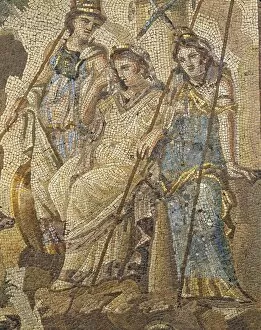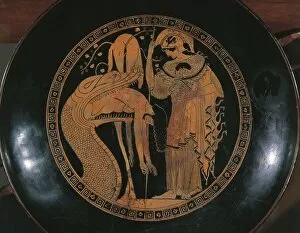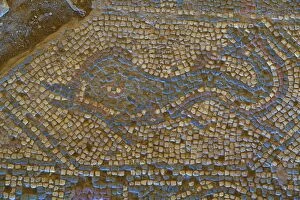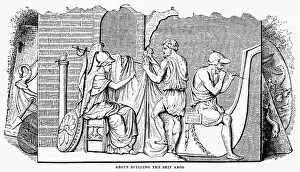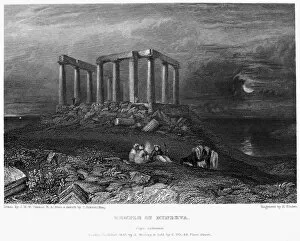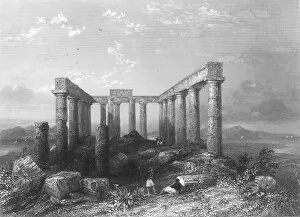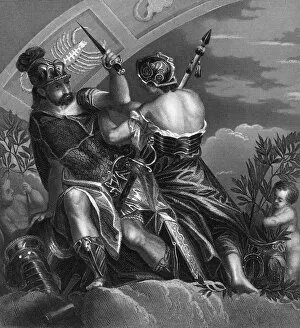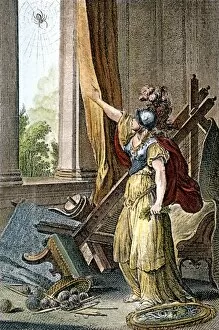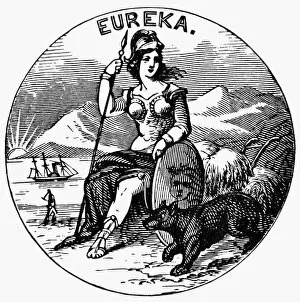Athena Collection (#25)
"Athena
For sale as Licensed Images
Choose your image, Select your licence and Download the media
"Athena: The Wise and Powerful Goddess of Ancient Greece" From the majestic Statue in the Parthenon of ancient Athens to her fierce battle against the giant Alcyoneus on the Pergamon Altar, it has always been a symbol of strength and wisdom. In the c6th century BC artwork "Hercules Brings Cerberus to Eurystheus, " we see Athena standing alongside Hermes, showcasing her strategic prowess. The Panathenaic prize amphora with its intricate lid featuring a figure of a testament to her importance in Greek culture during 363-2 BC. This terracotta masterpiece showcases her role as a patroness of arts and crafts. As we explore further into ancient Greece, we encounter the Tholos of the Sanctuary Pronaia. This architectural marvel stands as evidence to Athenian devotion towards their beloved goddess. Athena's influence extends beyond art and architecture; she represents knowledge triumphing over ignorance in Minerva Victorious over ignorance. Mussard's depiction captures her commanding presence perfectly. In sculptures like Minerva from 1775, carved from marble, artists have immortalized this deity's grace and beauty for generations to come. Symbolically represented by both Nightingale & Owl, Athena embodies wisdom during day and night - an embodiment that resonates through time. In The Council of Gods (or Assembly of Gods), Zeus surrounds himself with divinities like Hera, Aphrodite, but it is clear that none can match Athena's intellect or power. Lastly, we witness Hera, Aphrodite, and Athena preparing themselves for a contest before Paris in their pursuit for beauty. While all three are stunning goddesses in their own right, it is evident that Athena possesses an unmatched radiance combined with intelligence. Throughout history and mythology alike, one thing remains constant - Athena reigns supreme as one who encompasses courage on the battlefield, wisdom in decision-making, and beauty that captivates all.

